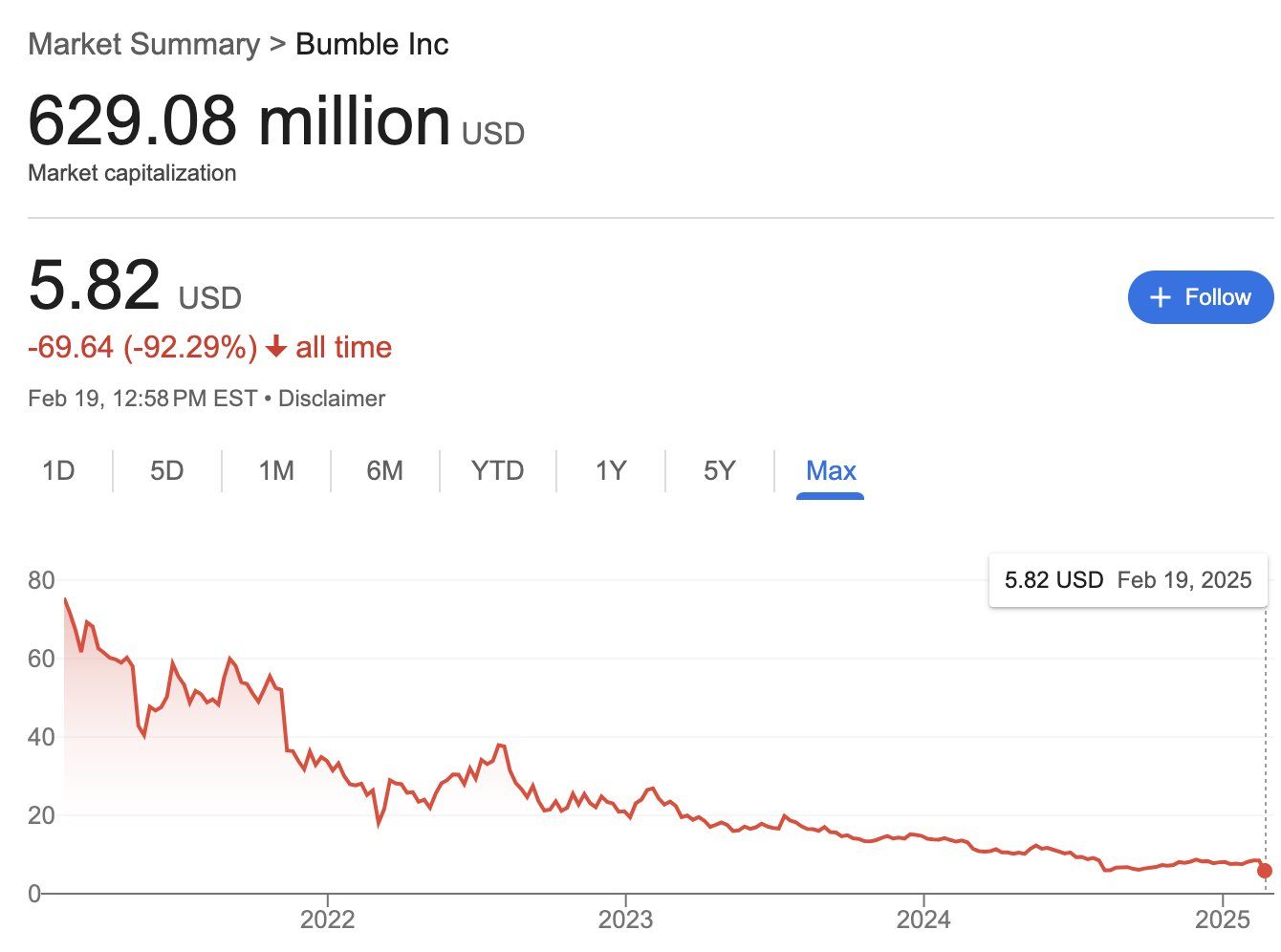When Culture Turns
When Culture Turns, the Product Dies
The collapse of Bumble is a case study, a before slide on everyone else's deck.
Bumble isn't coming back. Not meaningfully. Not in spirit. Not in relevance.
And no, it's not because of the market. Or funding. Or headcount. Or churn.
It's because culture turned on them. And worse, they helped design the very culture that turned.
 The market's verdict: A 92% decline since IPO reflects more than financial metrics—it represents a loss of cultural relevance.
The market's verdict: A 92% decline since IPO reflects more than financial metrics—it represents a loss of cultural relevance.
The Fall
For a while, they played god. They gamified courtship. They industrialized gender dynamics. They wrapped it in empowerment-speak, mistaking marketing for meaning.
But somewhere along the way, the app stopped feeling good. It stopped feeling like connection. It stopped feeling at all.
And feeling is the product.
When people feel seen, hopeful, emotionally safe, that's value. That's retention. That's brand.
When they feel exploited, exhausted, or algorithmically mined for dopamine?
That's a cultural death spiral.
The Aftermath
Bumble thought it could control the story. Tweak the copy. Add new features. Update the design.
But you can't out-iterate a vibe collapse.
Culture isn't a KPI. It's gravity. And once it shifts, you fall.
Like a plane in freefall, engines dead, no lift, no glide, just vertical descent through silence.
And when you hit, it's not a pivot. It's a crater.
No trust. No narrative. Just the ghosts of what could've been.
Because when culture turns, you don't get a second shot.
You become the cautionary tale.
The case study.
The before slide in someone else's deck.
The Lesson
And that's the real story:
Products don't die when features fail.
They die when they stop making people feel.
Thanks for reading! Share this post with others who might find it useful.